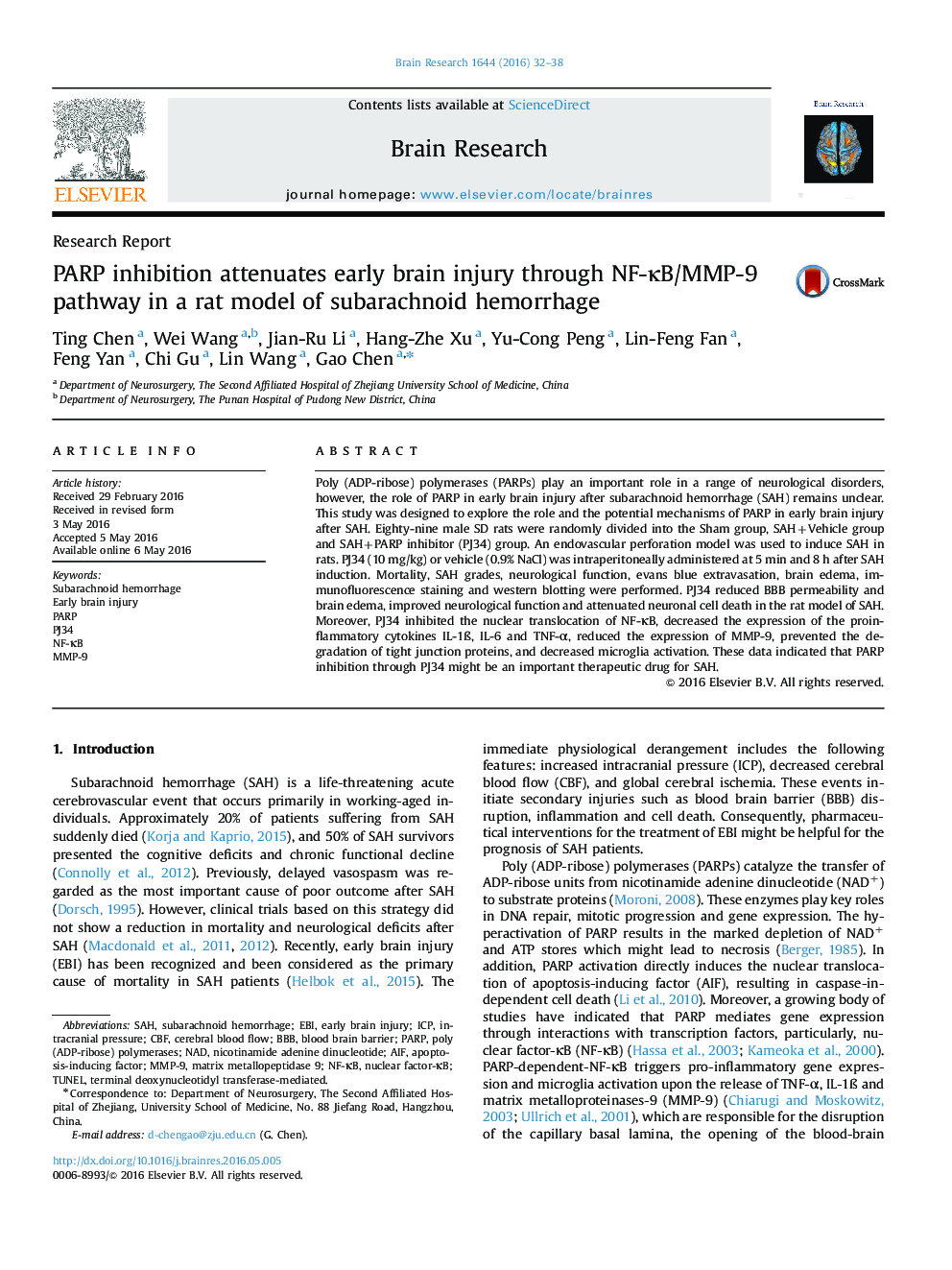| Article ID | Journal | Published Year | Pages | File Type |
|---|---|---|---|---|
| 6262457 | Brain Research | 2016 | 7 Pages |
â¢PJ34 improved neurological function and attenuated neuronal cell death in SAH model.â¢PJ34 reduced the BBB permeability and brain edema and decreased microglia activation.â¢PJ34 inhibited NF-κB translocation, decreased expression of proinflammatory cytokines.â¢PJ34 reduced the expression of MMP-9, and degradation of tight junction proteins.â¢PARP inhibition by PJ34 might be an important potential therapeutic drug for SAH.
Poly (ADP-ribose) polymerases (PARPs) play an important role in a range of neurological disorders, however, the role of PARP in early brain injury after subarachnoid hemorrhage (SAH) remains unclear. This study was designed to explore the role and the potential mechanisms of PARP in early brain injury after SAH. Eighty-nine male SD rats were randomly divided into the Sham group, SAH+Vehicle group and SAH+PARP inhibitor (PJ34) group. An endovascular perforation model was used to induce SAH in rats. PJ34 (10 mg/kg) or vehicle (0.9% NaCl) was intraperitoneally administered at 5 min and 8 h after SAH induction. Mortality, SAH grades, neurological function, evans blue extravasation, brain edema, immunofluorescence staining and western blotting were performed. PJ34 reduced BBB permeability and brain edema, improved neurological function and attenuated neuronal cell death in the rat model of SAH. Moreover, PJ34 inhibited the nuclear translocation of NF-κB, decreased the expression of the proinflammatory cytokines IL-1Ã, IL-6 and TNF-α, reduced the expression of MMP-9, prevented the degradation of tight junction proteins, and decreased microglia activation. These data indicated that PARP inhibition through PJ34 might be an important therapeutic drug for SAH.
